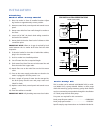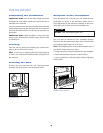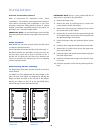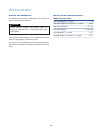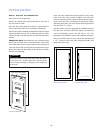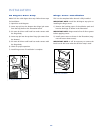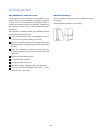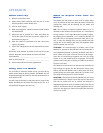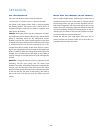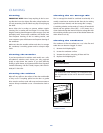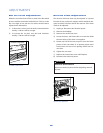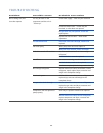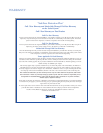
15
OPERATION
Ice Production
There are two distinct cycles: freeze and harvest.
1 freeze cycle + 1 harvest cycle = 1 batch of 8 cubes.
The freeze cycle happens when water is sprayed against
the freezing surface. The harvest cycle is when the ice is
released and water enters the ice maker. A complete cycle
takes about 30 minutes.
FREEZE: During the freeze cycle the compressor is pump-
ing refrigerant, the fan motor is blowing air, and the water
pump is circulating water. As the refrigerated surface
absorbs heat from the water sprayed against it, that heat
is moved to the area where the fan is blowing air.The heat
is transferred to the air, and the warmed up air is dis-
charged from the ice maker. At the same time ice is form-
ing on the refrigerated surface (located at the upper back
of the ice maker). When the refrigerated surface gets cold
enough, the ice maker’s timer will begin to turn. When it
turns far enough, it will stop the freeze cycle and begin the
harvest.
HARVEST: During the harvest cycle the compressor is still
operating, but the spray pump and fan motor have
stopped. Two other components have been energized; the
hot gas valve and the inlet water valve. These two valves
open and warm up the freezing surface, allowing the cubes
to fall into the bin. The timer is still turning, and when it
gets to the end of the harvest cycle, the freeze cycle will
restart.
How the Ice Maker Uses Water
The ice maker begins with a fixed charge of water that is
contained in the reservoir.As the water is sprayed against
the freezing surface, the part of water that does not con-
tain mineral impurities will freeze and stick to the ice cup
molds. The water containing impurities falls back into the
reservoir. Gradually, during the freezing portion of the ice
making cycle, the water in the reservoir will become high-
ly concentrated with mineral impurities.
During the harvest cycle fresh water flows into the ice
maker to dilute the reservoir water and to rinse the con-
centrated minerals down the drain.



